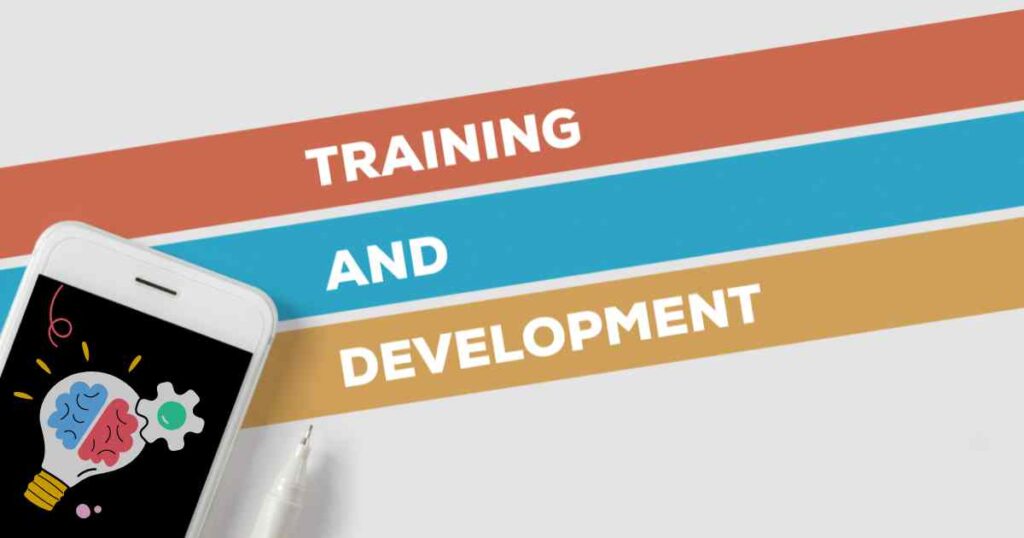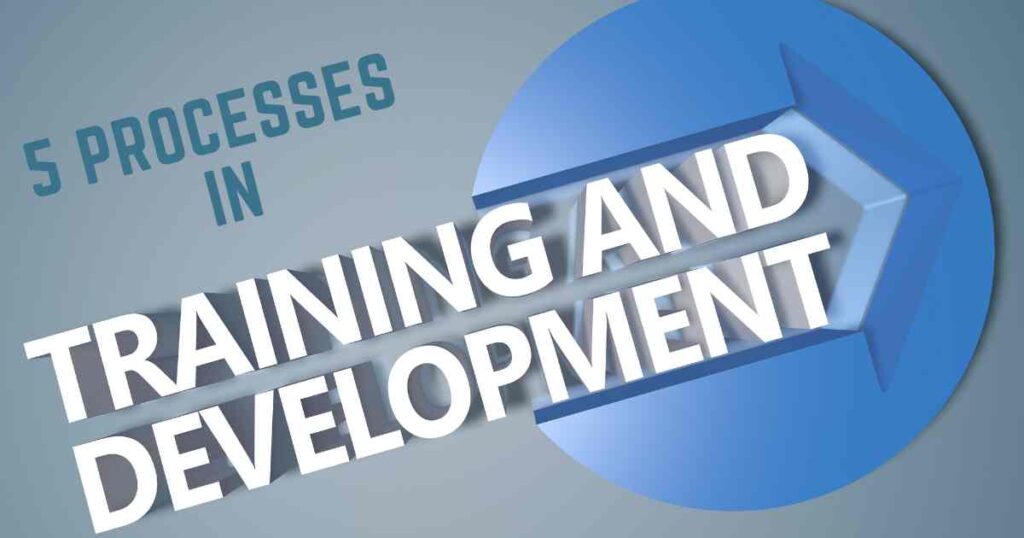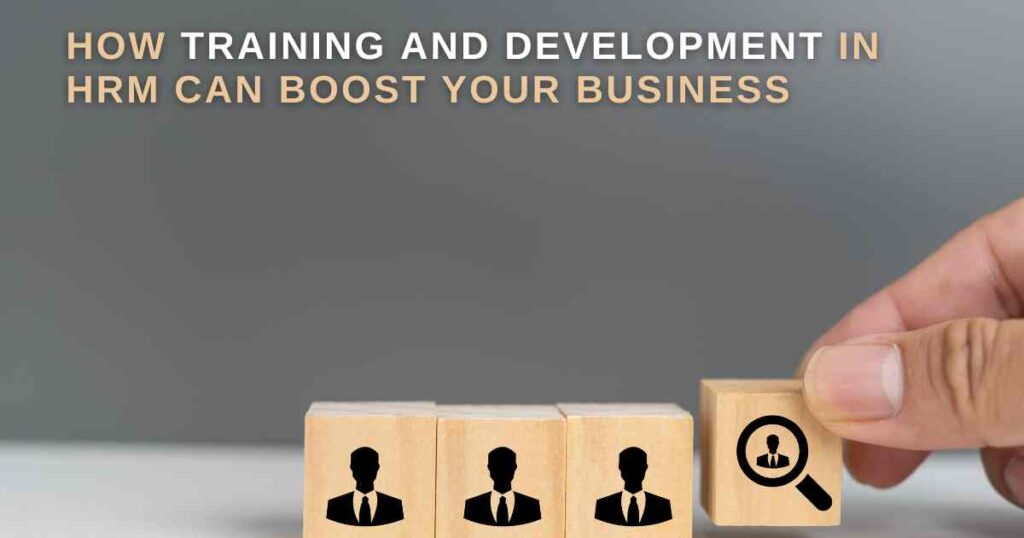Organizations must make an investment in their human resources in the hectic and competitive business climate of today. The combined knowledge, abilities, skills, and dispositions of the workforce are referred to as human capital, and they support corporate success. Training and development in HRM is one of the best methods to improve human resources.
In Human Resource Management (HRM), a method of staff education is referred to as training and development. It contains a variety of resources, guidelines, & exercises aimed at enhancing staff efficiency. Employees have the chance to broaden their information and improve their abilities.
Programs for training and growth can be very advantageous for both employers and workers. They can help increase profitability, efficiency, client happiness, retention, engagement, and creativity.This post will define training and development in HRM, describe its various kinds and phases, and explain how it can improve company performance.
What is training and development in HRM?

Boosting the know-how, capability, and expertise of employees through training is the goal. It’s all about honing the skills or behaviors that’ll help you in your current or future job. Training can be either formal or informal, either done on the job or off the job, with individuals or as a group, and can even be mandatory or voluntary.
Development’s all about sharpening up existing talents and helping employees reach their full potential. It’s all about getting employees ready for the future, equipping them to tackle any career challenges or opportunities that come their way. Development can be controlled by oneself or led, short-term or long-term, and all-encompassing or particular.
Training and development initiatives are done to help employees build skills to boost their work performance.
Types of training and development in HRM
There are various types of training and development programs that can cater to different needs and goals of employees and employers. Some of the common types are:
- Induction training: This type of training is given to new employees to orient them with the organization’s culture, policies, procedures, expectations, and benefits. It helps them to adjust to their new work environment & perform their job roles effeciently.
- Job training: Senior workers, supervisors, or special instructors provide this kind of training to teach employees how to do job-related tasks or functions. It can be done at work or outside of work, just you or with others, and have to do it or do it by choice.
- Technical or technology training: This training is for teaching employees the tech side of their job, like using software, machines, or tools. It enables them to stay on top of the newest advancements and inventions in their field.
- Soft skills training: This kind of training focuses on helping employees boost their interpersonal skills & emotional intelligence, like communication, teamwork, leadership, creative thinking, problem-solving, & excellent customer service. It helps them communicate well with others, and handle various situations with calmness and tact.
- Compliance training: This training is set up to make sure that employees stick to the legal and ethical guidelines of their industry & company. Topics like health & safety, inclusion and diversity, abuse prevention, data protection, and quality management – it’s all covered. It assists them in steering clear of dangers and liabilities that could be damaging to them or the organization.
- Management or leadership development: This training for current and potential managers or leaders is designed to help improve their knowledge, skills and abilities in managing people and resources. We look at all the basics, like strategic planning, making decisions, keeping motivation up, delegating tasks, sorting out conflicts, assessing performance, and giving some feedback. It gives them the motivation to get their teams fired up and reach their business objectives.
Here’s a few kinds of training and development in HRM. Depending on what each employee & employer need and want, different types of work can be combined or tailored to get the best results.
Benefits of training and development in HRM
Training and development in HRM can have multiple benefits for both employees and employers. Some of the common benefits are:
- Increased productivity: When employees stay current with new procedures and technologies, they can increase their overall output and quality of work. They can also perform their tasks faster and more accurately, reducing errors and costs.
- Improved retention: High-performing employees look for training and development opportunities to grow professionally. Learning and development initiatives signal to the employees that the organization values its employees and is willing to invest in their professional growth. It boosts loyalty among employees, which reduces turnover and enhances retention.
- Enhanced engagement: Training and development programs can help create a sense of teamwork and collaboration among employees. They can also increase employee motivation, satisfaction, and commitment to their work and organization. Engaged employees are more likely to perform well, stay loyal, and advocate for their employer.
- Strengthened innovation: Training and development programs can foster a culture of learning and creativity among employees. They can give employees the chance to learn new stuff, gain fresh insights, and come up with creative solutions. Innovative workers can help come up with new tactics, goods, or offerings that can give the business an edge against the competition.
- Reduced risks: Training and development in HRM initiatives can assist in ensuring that staff members uphold the moral and regulatory requirements of their companies and professions. Additionally, they can assist staff in gaining the knowledge & abilities necessary to carry out their duties securely and prevent mishaps or injuries. Reduced dangers can shield the company from obligations, legal action, and social harm.
Here are a few benefits of training and development in HRM. Depending on the training and development programs you use, various stakeholders can get different benefits.
5 processes in training and development in HRM

Training and development in HRM can be viewed as a process comprising five related stages or activities:
- Assessment of training needs: This stage involves identifying the gaps between the current and desired performance of employees and determining the causes and solutions of these gaps. It can be done through various methods, such as surveys, interviews, tests, observations, or performance reviews.
- Establishment of specific objectives: This stage involves setting clear and measurable goals for what the training and development program should achieve. It can be done using the SMART criteria (Specific, Measurable, Achievable, Relevant, Time-bound). The objectives should align with the organizational goals and strategies and reflect the needs and expectations of employees and employers.
- Selection of appropriate methods: This stage involves choosing the most suitable type and mode of training and development for each objective. It can be done by considering various factors, such as cost, time, availability, effectiveness, feasibility, and preference. The methods can range from formal to informal, online to offline, individual to group-based, or instructor-led to self-directed.
- Implementation of programs: This stage involves delivering the training and development content to employees using the selected methods. It can be done by ensuring that all the necessary resources and facilities are available and accessible. It also involves preparing learners for participation by providing them with clear instructions, expectations, feedback mechanisms, and incentives.
- Evaluation of outcomes: This stage involves measuring the results and impact of training and development programs on employee performance. It can be done by using various tools, such as tests, surveys, interviews, observations, or performance reviews. It also involves comparing the outcomes with the objectives and identifying areas of improvement or modification for future programs.
These are some examples of processes in training and development in HRM. Depending on the scope and complexity of each program, different processes can be applied or modified for optimal results.
Conclusion
Training and development in HRM is a super important process that can help businesses reach their goals and objectives by boosting the ability and potential of their staff. It can also help employees boost their careers and enjoy their job more by upping their skills and knowledge. Different kinds of training and development programs come in different forms, stages, and have different perks based on what both employees and employers want and expect. Investing in training and development in HRM can really pay off for organizations – increased productivity, retention, engagement, innovation, and safety, not to mention decreased risks, costs, and errors.
If you’re looking for an approach to boost your business game with HRM training and development, Yunic HR solutions might be worth considering. Yunic HR solutions, based in Delhi, is a top-notch HR consultancy that’ll give your organization tailored and efficient training and development solutions. Yunic HR solutions has an awesome squad of certified and experienced trainers who can whip up some really interesting and useful learning experiences tailored to your organization’s needs. Yunic HR solutions offers follow-up assistance and advice to make sure your learning and growth objectives get achieved.
Find out how Yunic HR solutions can help you out with training and development in HRM. Take a look at our website or get in touch with us today.

